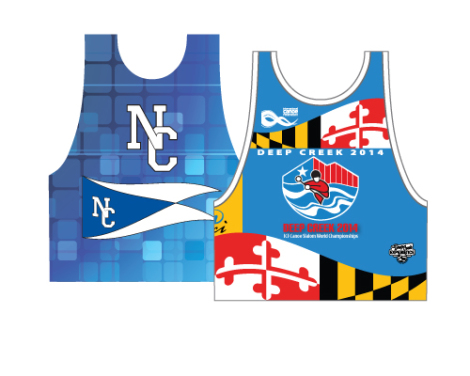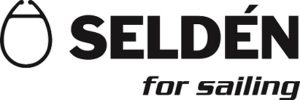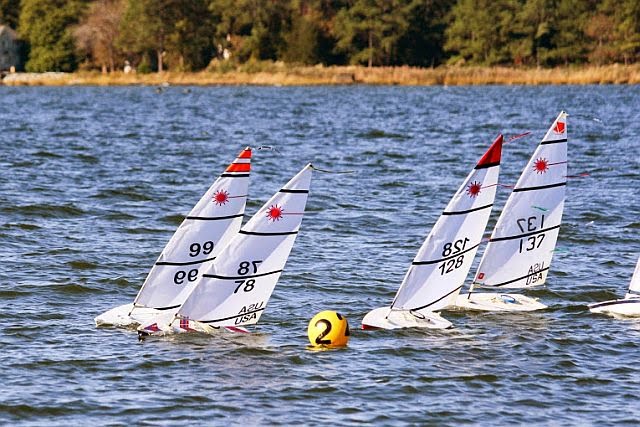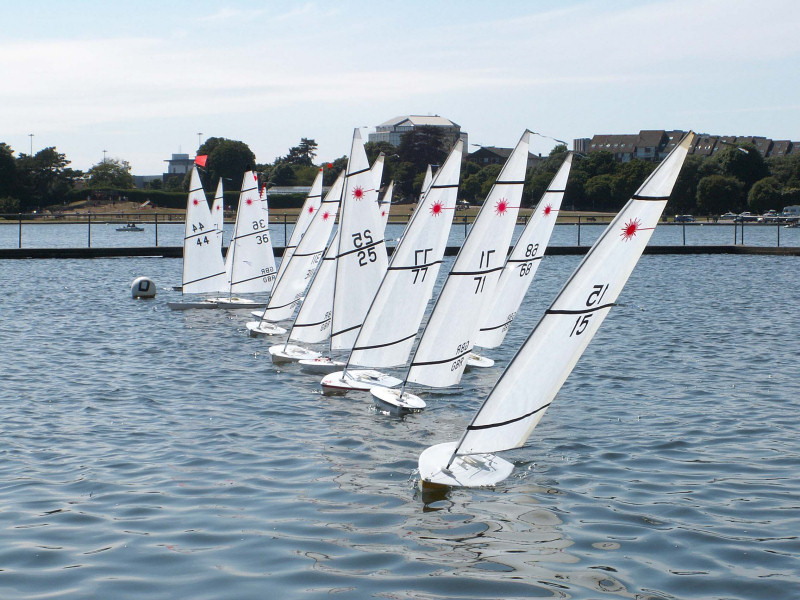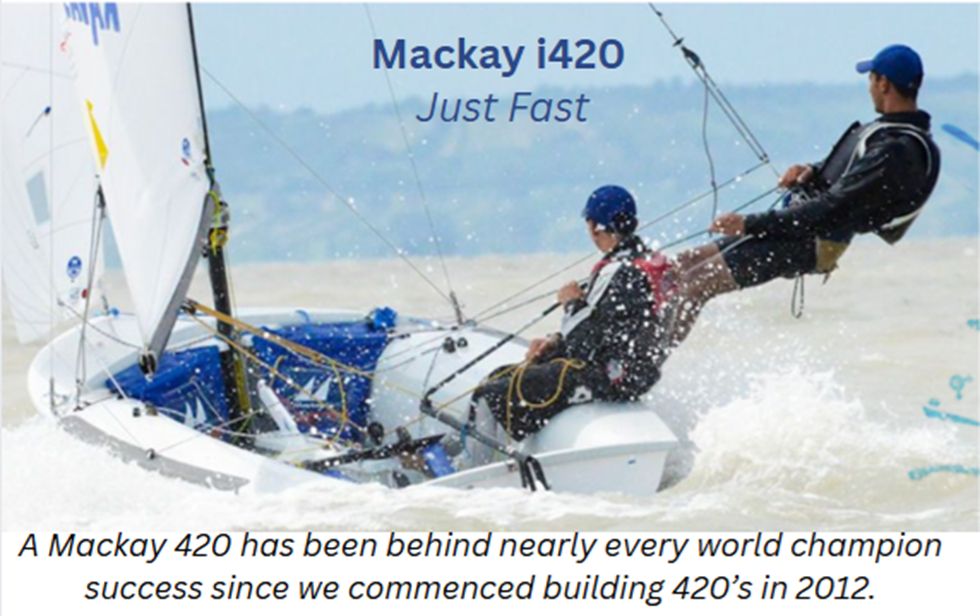
Blog
High School Sailing Spotlight: PCC Dinghy Championship Report
Sail1Design would like to welcome our newest intern/reporter, Sammy Pickell, to our Airwaves team. Sammy is a high school student and sailor on the Corona del Mar team, and will focus on west coast & high school sailing!
Pacific Coast Championships: Competition Pushes Corona del Mar Sailing Team to the Top!

Ten years later, now on a new team together, both eighteen year-olds stood proudly holding their trophy with our Corona del Mar High School sailing team. These two had returned, and improved upon their former success that sailing on a team together brought them; Rhodes and Derek led the Corona del Mar Seakings to the Pacific Coast Championship for the Seakings’ first time in decades.
After half our team graduated preceding the 2014-2015 season, the two senior boys first took on the responsibility of skippering our Varsity Gold Division, as the only two upperclassmen skippers on the team. Though obviously racing against different sailors in separate divisions, unlike the sabot days, each boy’s competitive nature and excellent scores constantly motivated the other before his race— a recurring relationship of amicable competition benefiting our sailing team. It was never about Rhodes and Derek simply fighting for scores against competing schools; the sense of the Seakings’ community comes with pushing teammates to race stronger and better, and they were no exception. For many years, the CdM team had constantly fallen as underdogs— always close behind Newport Harbor and Point Loma, yet always edged out. We constantly managed to take third or fourth places, only narrowly qualifying for the Mallory in 2015.


On Sunday, the sailors faced almost identical conditions as Saturday. It was still fair game for any team— the point values were so close that CdM could not afford to make a blunder during a race. Rhodes and I managed to secure strong pin starts at the
beginning of the day, as Derek and Tori sailed more conservatively from the middle. Nonetheless, each team sailed well, Derek and Rhodes always remembering to exchange advice to the other on the rotation dock about the constantly shifting wind. ! Rhodes and I ended the day in second place, and Derek and Tori directly responded to his success with two strong finishes crucially ahead of Point Loma. Constantly on the cusp of greatness, with its senior boys’ strong competition and teamwork with one another paving the way, the CdM sailing team finally broke through the underdog status— finally ahead of Point Loma and Newport Harbor.
(for full results click HERE)
Teamwork in the CFJ is prevalent everywhere— from the actions between the skipper and crew to assisting your teammates in being mentally and physically prepared come race time. An often forgotten aspect in the process of working as a team is the inner rivalries among team players— the competitiveness and the drive to exceed your teammate’s previous performances. For CdM’s case, the two skippers had pushed each other to the top since sailing sabots from the same yacht club. Inner team competition is a force that molds champion sailors, but more importantly, it creates champion teams. Nationals, here we come!
Corona del Mar, Point Loma, Newport Harbor, and Santa Barbara are headed to nationals this May 14-15 in Charleston, South Carolina !
Club Profile: Annapolis Yacht Club
News Flash! AYC is hiring a Full-Time Optimist Coach!
AYC beginnings were in 1886 as an informal canoe club. A building was constructed two years later on a pile of 
Humble Beginnings

A Post-War Renewal
World War I and the depression slowed boating activities until the mid-30s. A hurricane damaged the clubhouse and the wharf was reduced to pilings in 1933 and it was difficult to keep the club’s quota of 100 resident members. By 1936, there seemed to be little interest by members in the club and changes were needed. With renewal in mind, in 1937 the Annapolis Yacht Club was incorporated and the first formal regatta (Annual) was held that year. The Fall Series first year was in 1940 with five boats competing. World War II interrupted organized racing, but in 1946 the Spring Series was started with three classes – 30 Square Meters, Stars and Chesapeake 20s. By 1948, Moths, Comets and Hamptons were also taking part. The Annapolis to Newport Race (Newport to Annapolis back then) started in 1947 and has been run every two years since. A dining room was added to the club in the late 1940s and in 1948, the first Smoking Lamp newsletter appeared as a single page mimeographed sheet.
The Junior Fleet
The junior fleet started in 1948, and the first junior trophy was presented in 1953. The first junior boat, Dolphins, were replaced by Penguins, which were next followed by 420s which the junior fleet still races.
Wednesday Night Races: An Annapolis Tradition
Wednesday Night Races were the brainchild of P/C Gaither Scott. After seeing the Wednesday Night Races at East Greenwich YC in Rhode Island in 1958, Scott inaugurated midweek racing at AYC in 1959. No race committee, no prizes, no scoring but there was a picnic supper after sailing. “S” boats, H-23s, 5.5 meters, Bermuda One Design and Rainbows raced, but interest waned in the mid-60s. To correct this, smaller classes of boats were invited and in 1965 35 boats entered the series. By 1967 112 boats were taking part.
Frostbite Racing
Frostbite racing began in the winter of 1962-1963. Seven Rainbows were the inaugural class with five short races a day, starting and finishing at the club. Gladiators joined Frostbite racing in the fall of 1963 and MORC made the third class in 1964. The first Hangover Bowl (New Year’s Day) was on Jan. 1, 1966.
A Need for Growth
By 1959, membership had risen to 1000 and a new club building was badly needed. This was opened in 1963, with the first deck left unfinished due to lack of funds. Frostbite and Wednesday Night Racing soon demanded more club social space, and the Skipjack Lounge was finished in 1969.
The land across the Eastport Bridge where the junior fleet building is now (Holden Property) was purchased in 1969. The junior fleet was established there and a new building for them was completed in 1995. In 1989, women were welcomed as members, and the White Rocks Marina property (now the Harborside Sailing Center) was added in 1990. The club’s first official one-design fleet, the J/22, was started in 1991 with a crane added to Harborside for launching of the boats. The clubhouse again underwent a major renovation in 1995.
More than a Club…
Today, AYC is at full membership (1600 regular members) with very active social, racing, and cruising programs. Large international events such as the Star Class World Championship, Rolex International Women’s Keelboat Championship, and many North American championships are hosted every year at AYC. Harborside is filled with one design boats (J/22s, J/24s, Etchells, Stars, Melges 24) while the in-the-water boat slips are in high demand. AYC is known worldwide thanks to the members who are prominent in participating in, promoting, and organizing the sport of sailboat racing, as well as those who opt to leisurely cruise the waters of the Chesapeake and beyond.
About The Junior Fleet
AYC’s Junior Fleet, established in 1948, has a long and impressive history.
News Flash! AYC is hiring a Full-Time Optimist Coach!
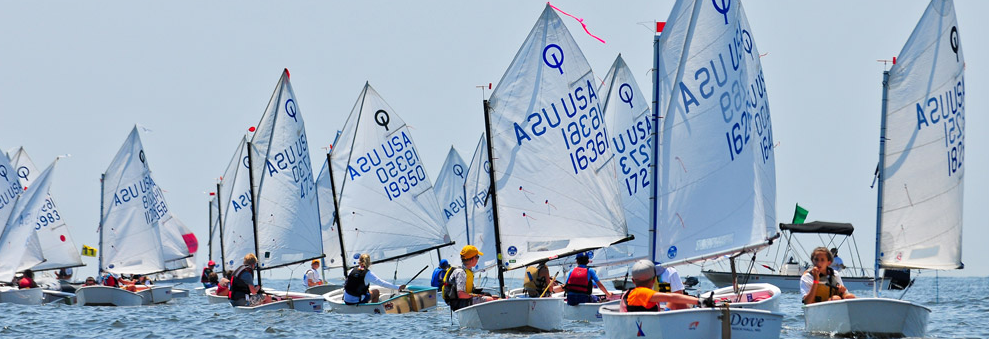
A Growing Fleet
In 1951, just three years later, there were 37 active members. At a party in October of that year, a Junior Fleet Penguin Fund was started and funded by a raffle where pieces of a lamb-shaped cake were bid upon and $26 was raised. By 1952, the Junior Fleet, having found the Dolphin to be unsatisfactory as a junior boat, replaced the Dolphins with Penguins at the advice of Fleet Captain Jack Martin. Chairman James Sindall commissioned four new Penguins that were added to the fleet. This addition marked the beginning of organized activity and Junior Sailor Nancy Scofield was awarded the first Fleet Trophy in 1953. Penguin activity continued until the 1960s when 420s were introduced. AYC’s Junior Fleet continues to sail 420s today.
New Land and New Buildings
In 1969, land on the Eastport side of the Bridge was purchased and the Junior Fleet continued to expand. Practices have been held on this site since 1969, but the first Junior building was not completed until 1995. This first building was renovated and expanded to the current design in 2008.
A Focus on Racing
The Junior Fleet has come a long way since its inception in 1948. While the development of new sailors and sailing as a life-long sport are important, the AYC Junior Fleet is also a nationally recognized program for the long-standing excellence in racing it has fostered. On a regional level, the Club has generated numerous Chesapeake Bay Junior Champions, Bay Midget Champions, the Middle Atlantic Midget Title, Victory in the North American Junior and Senior Penguin Championships and the Sears Bowl. Most recently, three teams of 420 sailors were awarded first, second, and third place in the Inaugural Triple Crown Championship. Graduates of the Junior Fleet Program have won the Men’s Championship of the Bay and the Single Handed Championship of the Bay.
Recent History
In 2008, AYC purchased 6 29ers to augment the Club’s Junior Fleet boats and programs, and hosted the first ever 29er Mid-Atlantic Championship.
Today, our Junior Fleet has one of the most active year-round programs in the country. Our Juniors are on the water more than 250 days of the year during all seasons.
The Junior Fleet maintains a popular and nationally-recognized Optimist team. These young sailors travel around the country and world representing AYC. This team consistently qualifies sailors for the US Optimist Team Trials, and provides an avenue for sailors to develop through the AYC program; from intro, to Green Fleet, to racing.
A fleet of I-420s was purchased in summer 2009 to provide an additional training platform for our advanced sailors. Since then, AYC has hosted the I-420 Atlantic Coast Championship, providing a lead-up event for the Youth World Qualifier held in I-420s in the winter.
Beginning in 2010, all sailors involved in the program will be AYC members, with the exception of Creek Critters and sailors in the high school program. This was made possible with the institution of the Junior Associate Member category or JAM. Today, JAM is a membership that not just allows for a sailor to take part in our programs, but that also allows for limited use of the clubhouse and facilities.
ICSA Team Race Rankings, 4/22/2016

Radio-Controlled One Design Sailing Takes Off at Tred Avon YC!
Tred Avon YC Embraces RC Fleet into One Design Program
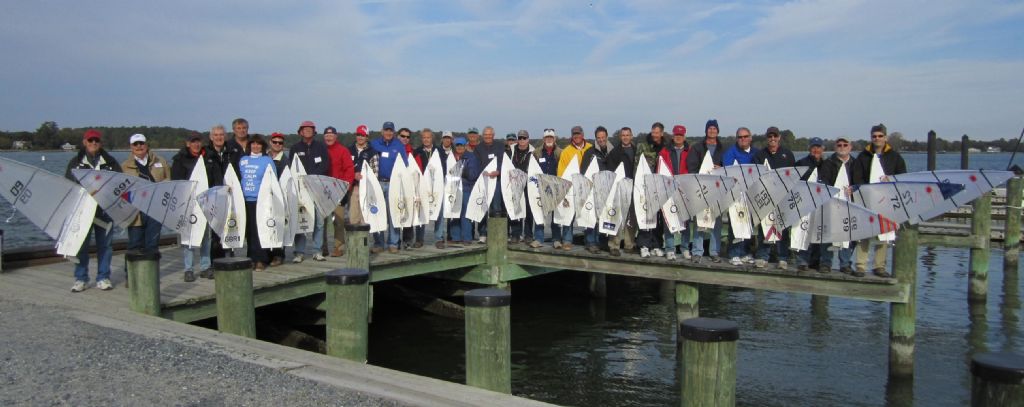
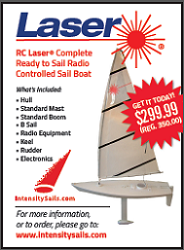
Along with other forward thinking yacht clubs like Larchmont and San Diego, Tred Avon Y.C. is in the vanguard of including radio-controlled sailing within established racing programs. Prior to officially sanctioning the Oxford RC Laser fleet, over the last several years Tred Avon Y.C. has hosted several major RC championships, and already enjoys considerable recognition throughout the USA as a leading RC venue. In late October, TAYC will host the National Championships of the EC12, 5′ scale model based on America’s Cup yachts of the 1970’s. EC12 is one of the largest and most popular classes in AMYA.
The Oxford RC Laser Fleet predominantly sails RC Lasers, 1/4-scale replicas of the popular Olympic dinghy, but several members race other RC classes as well. The Oxford fleet sails late Wednesday afternoons in the spring and fall. Orientation sessions for those interested are held Wednesday afternoons prior to racing. Tred Avon Y.C. encourages both members and non-members to give remote controlled racing a try (the club collects a nominal fee from those participating as non-TAYC club members).
Remote Control sailing at Tred Avon YC is led by Dave Branning as the RC Fleet Liaison. Branning reports to TAYC Board Member, Brandon Loveless, who leads the centerboard and one-design classes at TAYC. Oxford RC Laser Fleet Captain, Bob Roe, has an active racing season planned for 2016 that begins on March 16th.
For more info, contact liaison [email protected]
Interested in an RC Laser? Check out S1D Team Member Intensity Sails. They can set you up!
Club Profile: Sail Newport Expands!
Sail Newport expands its footprint to keep up with demand.

Sail Newport is THE premier community sailing center in Rhode Island and highly regarded across the country. This profile and a tremendously skilled staff and cadre of volunteers available for sailing adventures have made Sail Newport one of the Go To venues for hosting your regatta. They can and have run regattas as diverse as a local Opti Green fleet event to regional, national, North American and world championships plus elite events: the VOR and America’s Cup world series. For example, on the Sail Newport calendar for 2016, beginning end of April running thru to end of October there are Four National championships, two North Americans, a couple of regionals, several youth related coaching and Opti like regattas, the Melges 32 worlds and the World Match Racing tour Newport stop. With the ‘other’ regattas, Sail Newport is hosting a total of 24 regattas in 6 months…..And that is just ONE entity in Newport…
But after close to thirty-three years, Sail Newport has outgrown is the physical plant at Fort Adams. The buildings are both small and aging and becoming vastly outgrown by the continued growth of Sail Newport and related growth of staff amongst other elements.
In order to meet this pre middle age spread as it were, Sail Newport’s board, directors and executive staff, led by Executive Director Brad Read, have been developing a plan for modest expansion to accommodate the increasing demand for the services that Sail Newport’s core mission offers. The centerpiece of this expansion is the construction of a building on land that regulars will commonly see rigged with a tent in summer, at the foot of the Admirals pier.

Embracing Rhode Island’s commitment to a more environmentally and sustainable future, the building will encompass many of the latest environmental building practices: Solar panels, landscaping and filters to mitigate the effects of water run off and many related elements of contemporary ‘green’ building. And because of the historical aspect of the Ft. Adams complex the new building is designed to compliment the look of existing buildings on the property.
On a dark and stormy April night in Newport, RI, the feel was a lot more summer, kids, sailing and learning, inside a meeting room at the Newport Public Library. This was the venue for the Environmental Assessment /Assessment of Effect open house required by law. A gathering of twenty five to thirty people some dripping from the torrential rain outside milled around reading the overall brief, studying renderings of the building, plans for the project and discussing the project. Because Sail Newport leases it facility from the State of Rhode Island and the entire Fort Adams complex is under the control of a variety of federal agencies, there were representatives from these agencies to answer questions. Read and senior staff from Sail Newport were present as was Mohamad Farzan, principal of Newport Architecture, the designers of the building. Other stake holders in the Park including the president of Newport Rugby a perennial consumer of the fields up the hill to the west of the Ft. Adams access road were seen browsing the presentation.
Sail Newport is indeed a fantastic facility for sailing from, especially in the summer. The introduction of this new building is very timely considering the expansion of, in particular, High School sailing in the spring. Apart from the small Sail Newport office the other buildings available are unheated and so not conducive to chalk-talk like activities when the in the water conditions do not lend themselves to sailing.
Beginning this spring, three of the high schools on Aquidneck Island plus Prout School in Wakefield RI are all sailing out of Sail Newport and this is creating it’s own great Gravitational Density for local youth sailors. On a recent Wednesday afternoon sailing from Sail Newport were the four schools mentioned plus St Georges sailing a match against Moses Brown plus a couple of the St. Georges JV teams practicing. All told there were close to twenty five 420’s out sailing with perhaps 60 teenage sailors on the water, 6 coach boats and several racing and practice areas going all at once. And this count excludes Salve Regina University who is based out of the boat basin at the north end of the park. If they were out too, the count may well be over 40 boats and a hundred young sailors.
That Newport is the Sailing Capital of the world there can be no doubt. The new building on site and the expansion of the Sail Newport core mission, to introduce youth sailors to the sport and to provide public access to the water will add another boat length or two to this truism and make Sail Newport an even better place to sail from than it already is.
